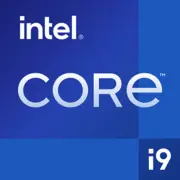Intel Core i9-10900K

Intel Core i9-10900K in 2025: Is it Worth Buying the Legendary 10-Core Processor Today?
Relevant Analysis for Gamers, Enthusiasts, and Professionals
Key Specifications: Architecture, Process Technology, and Key Features
The Intel Core i9-10900K, released in 2020, remains an iconic solution for many users. Despite its age, its specifications are impressive:
- Architecture: Comet Lake-S (14 nm+++).
- Cores/Threads: 10/20.
- Frequencies: Base — 3.7 GHz, maximum in turbo mode — up to 5.3 GHz (Turbo Boost Max 3.0).
- Cache: 20 MB L3.
- TDP: 125 W (real power consumption when overclocked can reach 250 W).
- Graphics: Intel UHD Graphics 630 (basic 4K support, but unsuitable for gaming).
Key Features:
- Support for Hyper-Threading for multithreaded workloads.
- Unlocked multiplier for overclocking.
- Thermal Velocity Boost and Intel Adaptive Boost technologies for automatic frequency increases.
Performance in 2025:
- Geekbench 6: 1753 (Single-Core), 9267 (Multi-Core).
- In games (e.g., Cyberpunk 2077 Phantom Liberty), it delivers 90-120 FPS paired with an RTX 4070 Ti on Ultra settings (1080p).
- For rendering in Blender (BMW scene), it takes about 7.5 minutes — on par with the Ryzen 7 5800X.
Compatible Motherboards: Sockets and Chipsets
The processor uses the LGA 1200 socket, supported by the following chipsets:
- Z490: Best choice for overclocking (e.g., ASUS ROG Maximus XII Hero). Supports PCIe 3.0, DDR4 RAM overclocking up to 4800 MHz (with XMP).
- B460/H470: Budget boards without overclocking (ASUS TUF Gaming B460-Plus). RAM frequency is limited to 2933 MHz.
- H410: For office builds (Gigabyte H410M S2H).
Important in 2025:
- New LGA 1200 boards are no longer being produced. Prices for remaining stock start from $120 (Z490) to $60 (H410).
- For maximum performance, look for models with a strong VRM (e.g., MSI Z490 Tomahawk).
Supported Memory: DDR4 and Limitations
The i9-10900K works only with DDR4:
- Officially supports up to 2933 MHz (without overclocking).
- With the Z490 chipset and XMP profiles, modules up to 4800 MHz can be used.
Recommendations:
- For gaming: 2x16 GB DDR4-3600 CL16 (e.g., G.Skill Trident Z Neo).
- For work tasks: 4x8 GB DDR4-3200 CL18 (capacity is more important than speed).
Why No DDR5?
The Comet Lake architecture is not designed for DDR5. This is a significant downside for upgrading in 2025.
Power Supply: Power Calculation and Examples
When building a system with the i9-10900K, consider:
- Without Overclocking: 125 W (processor) + 250-300 W (graphics card level RTX 4070).
- With Overclocking: Up to 250 W (processor) + 350 W (RTX 4080).
Recommended PSUs:
- Minimum: 650 W (Corsair RM650x, 80+ Gold, $110).
- For overclocking and high-end graphics cards: 850 W (Seasonic PRIME GX-850, $160).
Tip: Don’t skimp on the power supply! Cheap models (EVGA W1, Thermaltake Smart) may not withstand peak loads.
Pros and Cons of the i9-10900K in 2025
Pros:
1. Gaming: High IPC and frequency up to 5.3 GHz provide smooth FPS.
2. Overclocking Potential: With good cooling, it’s easy to reach 5.1 GHz on all cores.
3. Price: New processors sell starting from $250 (cheaper than the Ryzen 7 7700X).
Cons:
1. Energy Efficiency: 14 nm vs. 5 nm of Ryzen 8000 — high heat and electricity costs.
2. No PCIe 4.0/5.0: SSDs and graphics cards don’t fully realize their speed.
3. “Dead” Platform: No upgrade to newer CPUs without replacing the motherboard.
Use Cases: Where is the i9-10900K Still Relevant?
1. Gaming: Ideal for 1080p/1440p. Paired with an RTX 4070 Ti, it can handle any AAA titles.
2. Work Tasks: Video editing in Premiere Pro, 3D modeling in SolidWorks.
3. Streaming: NVENC + 10 cores can handle encoding in OBS without lag.
Practical Example:
Streamer build: i9-10900K + RTX 4060 + 32 GB DDR4. Recording at 1080p60 + streaming on Twitch — CPU load does not exceed 70%.
Comparison with Competitors
1. AMD Ryzen 7 5800X3D ($300):
- Pros: Better in games (+15% FPS), PCIe 4.0 support.
- Cons: 8 cores vs. 10 for Intel.
2. Intel Core i5-14600K ($320):
- Pros: Newer architecture (Raptor Lake), DDR5, PCIe 5.0.
- Cons: Higher price, requires platform replacement.
3. Ryzen 9 7900 ($400):
- Pros: 12 cores, 5 nm, energy efficiency.
- Cons: More expensive, difficult upgrade path for LGA 1200 owners.
Conclusion: The i9-10900K is preferable only when there is a discount or if building on an old platform.
Practical Assembly Tips
1. Cooling:
- Minimum: DeepCool AK620 ($60).
- For overclocking: Arctic Liquid Freezer II 360 ($120).
2. Case: Choose models with ventilation (Lian Li Lancool 216). CPU temperature should not exceed 85°C.
3. Thermal Paste: Thermal Grizzly Kryonaut or Arctic MX-6.
4. BIOS: Update to the latest version for improved stability.
Final Conclusion: Who Should Consider the i9-10900K in 2025?
This processor is worth considering for:
- Gamers on a budget looking to upgrade an old system on LGA 1200.
- Enthusiasts wanting to experiment with overclocking.
- Professionals needing 10 cores for rendering without paying extra for DDR5.
Alternative: If you're building a PC from scratch, consider the Ryzen 5 8600G or Core i5-14600K. They offer modern technologies at a comparable price.
Price of the new i9-10900K in April 2025: $250-$300 (remaining stock). Don’t overpay — check for warranty availability!
Basic
CPU Specifications
Memory Specifications
GPU Specifications
Miscellaneous
Benchmarks
Compared to Other CPU
Share in social media
Or Link To Us
<a href="https://cputronic.com/cpu/intel-core-i9-10900k" target="_blank">Intel Core i9-10900K</a>